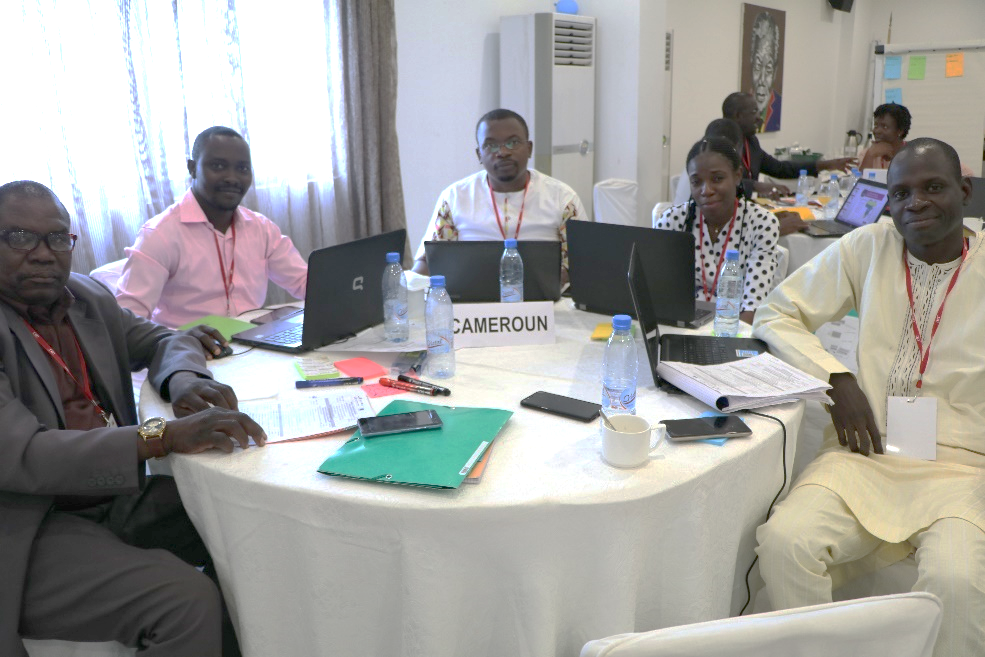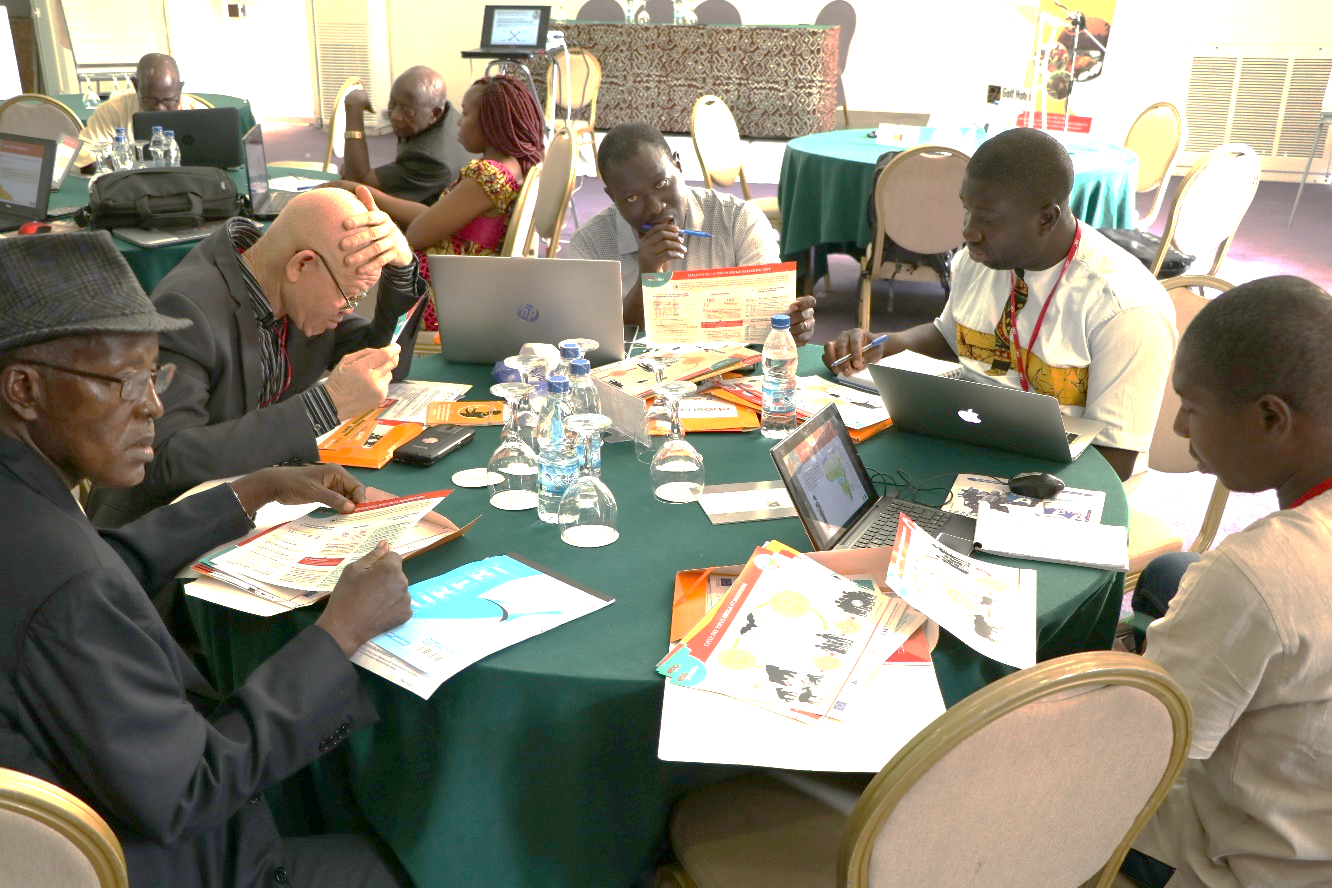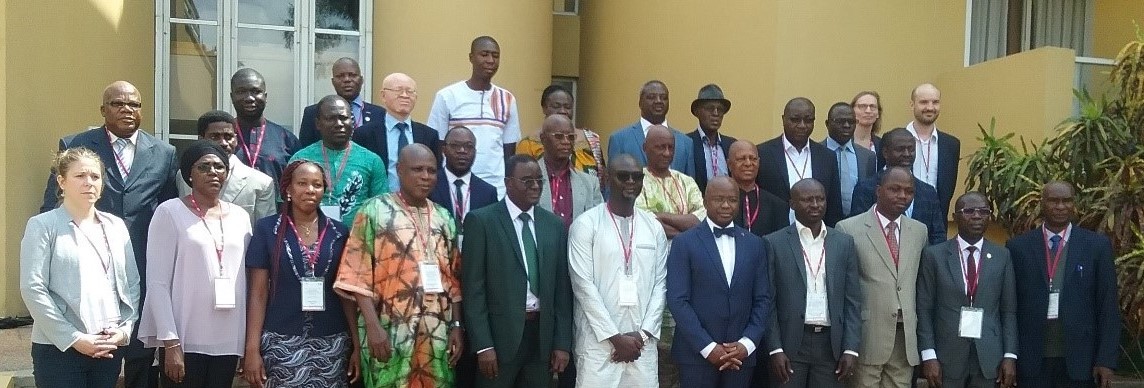



From 9 to 13 March 2020, in Abidjan, Côte d’Ivoire, the OIE organized a sub-regional capacity building workshop on the surveillance of viral haemorrhagic fevers (VHF) in wildlife. This workshop is the second of a series of three, planned for West and Central Africa countries and organised through the EBO-SURSY Project.
The workshop was intended for Delegates and National Focal Points for Animal Disease Notification, Wildlife, Veterinary Laboratories and Communication from Benin, Côte d’Ivoire, Guinea, and Senegal (by teleconference).
Opening ceremony of the workshop. Picture © S. Muset (oie) 2020
Participants from the target countries were joined by OIE Regional (Bamako) and Headquarters staff (Preparation and Resilience Department, Paris), CIRAD and IRD experts. In addition, a professional from UEMOA (WAEMU), as an observer was also in attendance.
The opening ceremony was chaired by Mr. Moussa Dosso, Minister of Animal and Fishery Resources of the Republic of Côte d’Ivoire. The Minister expressed his satisfaction that this workshop would contribute to the sustainable fight against VHF while allowing for exchanges of experience between countries. The Minister’s opening speech was preceded by a welcome address by Dr Adaman Kouadio, Delegate of Cote d’Ivoire for the OIE and a word from Dr Brice Lafia, representing the Director General of the OIE, Dr Monique Eloit.
The workshop was based on an interactive and participatory methodology, including exchanges of experiences through presentations from Senegal and Côte d’Ivoire, case studies and the use of user-friendly facilitation tools. The workshop was divided into ten (10) sequences structured in a step-by-step process to enable each country to develop a draft of surveillance protocol for the VHF of their choice, integrating wildlife and advocacy to convince national decision-makers, donors and technicians from other sectors, of the added value of their protocol.
Overview of participants during a group session. Picture © S. Muset (oie) 2020
The five-day workshop enabled participants to learn more about the following viral haemorrhagic fevers: Rift Valley Fever, Crimean-Congo Haemorrhagic Fever (CCHF), Lassa Fever and Ebola/Marburg Virus Disease. And more specifically: (i) their epidemiology and transmission cycle (species affected, modes of transmission), (ii) the role of wildlife in the epidemiology of the virus, (iii) the recognition of warning signs of an epidemic, (iv) the means of surveillance for these diseases, and (v) the surveillance method best suited to the context of your country.
Participants also had the opportunity to explore collaborative mechanisms integrating wildlife into epidemiological surveillance through a simulation exercise before participating in the co-construction of the protocol of surveillance.



Dr Monique Eloit, Director General of the OIE (OIE Scientific and Technical Review, 2014, 33 [2] )



